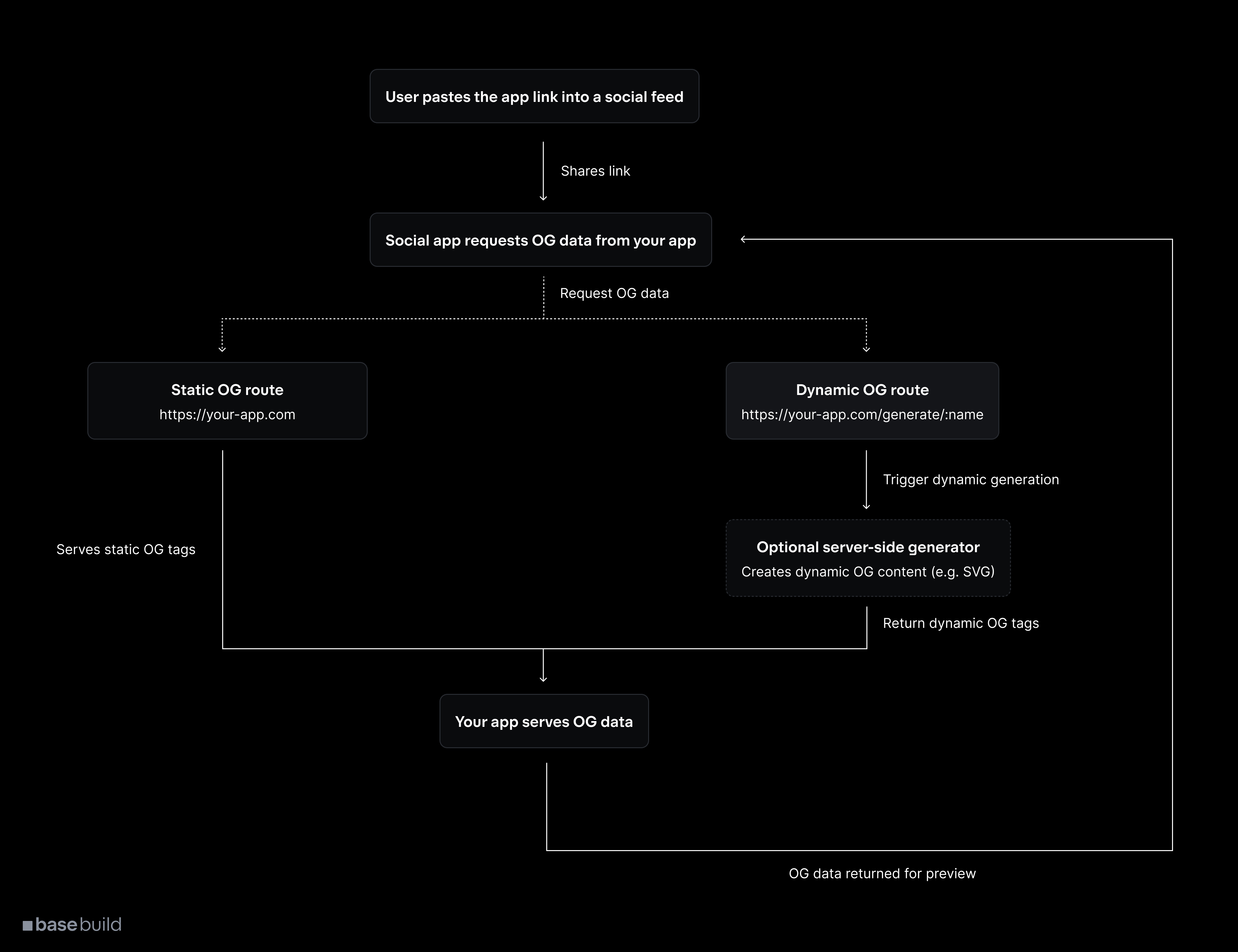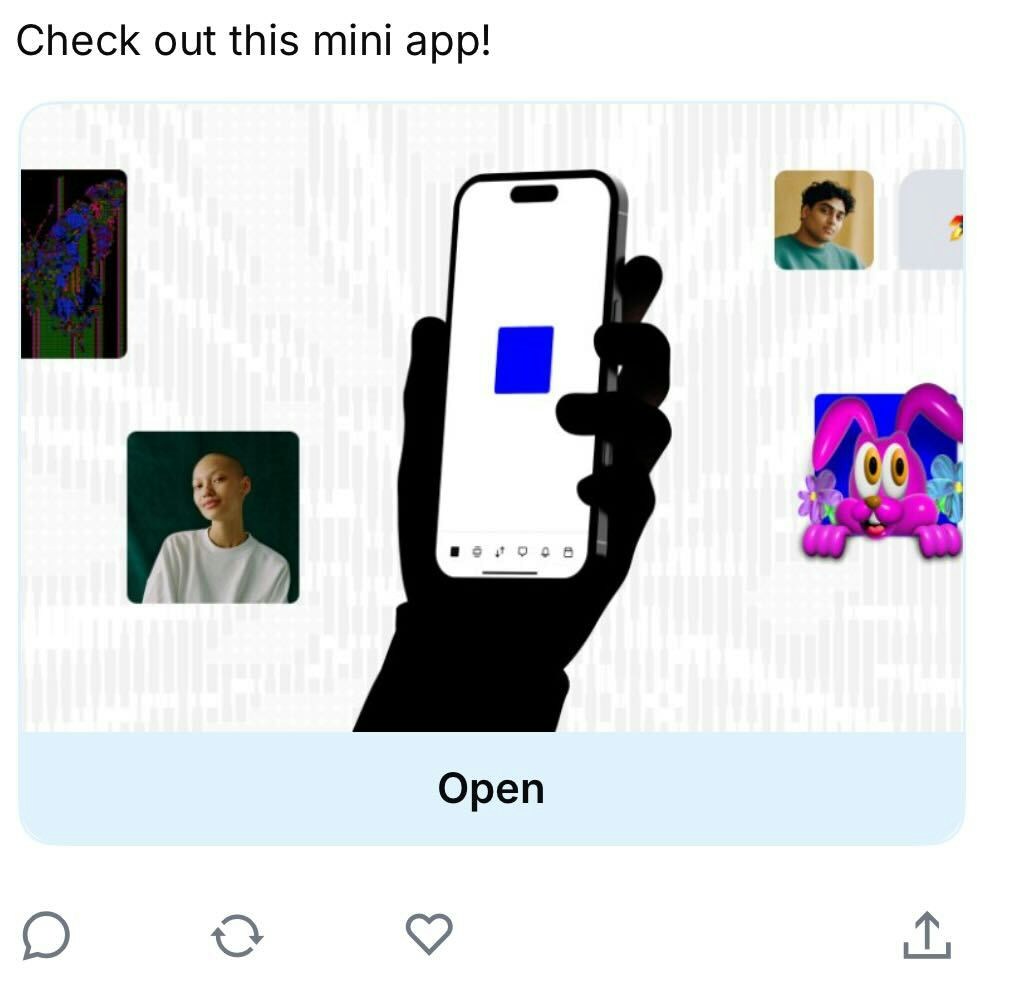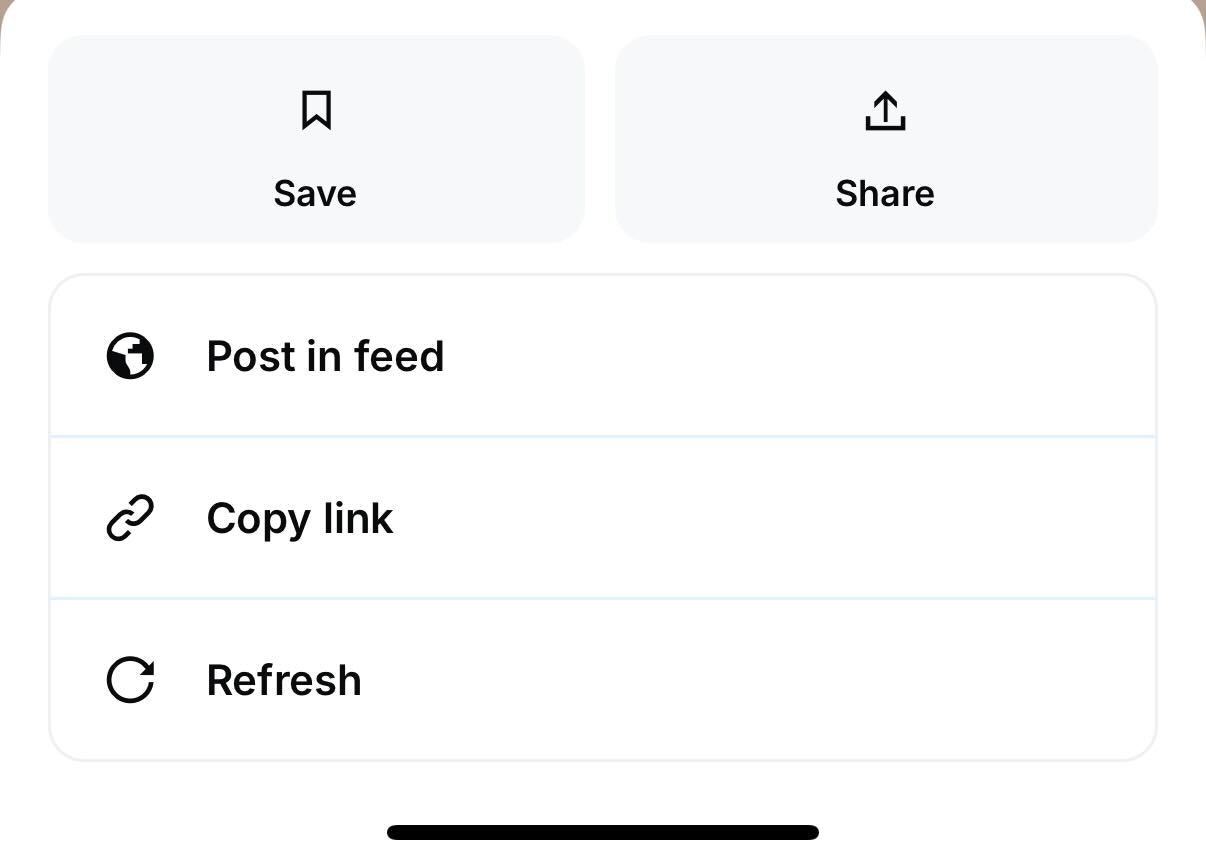What you’ll learn
By the end of this guide, you’ll be able to:
- Understand how embeds and metadata work together to create rich social previews
- Choose between static and dynamic embeds for different use cases
- Debug and optimize embeds for maximum performance and engagement
Why Sharing Matters
Sharing is one of the fastest and most cost-effective ways to grow your Mini App user base. When a user shares your app into a feed (such as Base App or Farcaster), the platform generates a rich embed — a visual preview complete with your branding, imagery, and call-to-action button that appears directly in social feeds. Every share:- Increases reach — friends and followers see your app instantly
- Drives engagement — visually compelling embeds get more clicks than plain links
- Improves ranking — shared apps are more likely to appear in category leaderboards
- Creates viral loops — great experiences encourage users to share with their networks
Metadata and Embeds
How Metadata Creates Embeds
When someone shares your Mini App link, platforms like Base App don’t just show a plain URL. Instead, they fetch metadata from your page and use it to generate a rich embed — a visual preview card with your image, title, and call-to-action button. The metadata acts as instructions that tell the platform exactly how to display your Mini App in feeds.
How metadata transforms into embeds
1
User shares your link
User clicks share or pastes your Mini App URL into a social feed (Base App, Farcaster).
2
Platform fetches metadata
The platform makes a request to your URL and reads the
<meta> tags in your HTML to understand how to display your app.3
Metadata becomes embed
Platform transforms your metadata into a rich visual embed with image, title, description, and interactive button.
4
Embed appears in feed
Your Mini App appears as an attractive, clickable card that users can launch directly from their feed.
Metadata Structure
Your metadata consists of specific HTML meta tags that define each part of the embed:index.html
imageUrl→ The main visual that appears in the embedbutton.title→ Text on the call-to-action buttonaction.name→ App name displayed in the embedaction.url→ Where users go when they click the embed
Embed Appearance in Feeds

Mini App embed in social feed
Manifest vs Embed Metadata
Your Mini App uses two types of metadata:Manifest file
Purpose: App registration and discovery Located at/.well-known/farcaster.json, this file contains your app’s basic information for Base App’s directory.
Mini Apps require a complete manifest. Read the manifest requirements.
Embed metadata
Purpose: Embed generation when shared Located in your HTML<head> tags, this metadata creates the rich embeds when users share your app.
index.html
Best Practices for Metadata
- Image optimization: Use 3:2 aspect ratio
- Clear value proposition in button and text
- Visual consistency with product UI
- Fast loading for metadata endpoints
- Validate across platforms pre‑launch
Sharing
Adding Share Functionality
Prompt users to share during key accomplishment moments using MiniKit’s compose hook.ComposeCastButton.tsx
Strategic sharing moments:
- After completing a quiz
- After minting an NFT
- After beating a challenge
- After reaching a milestone
From the Base App UI
Users can also share directly from your app’s detail view in the Base app through the built‑in share functionality.
Share button in the Base app UI
Embed Types
Static embeds
Use a single, unchanging image and text for all shares. Best for consistency and speed.Dynamic embeds
Generate metadata per user or event for personalization and FOMO. Ensure fast response (< 5s) and caching strategy.Implementation
With MiniKit (Next.js)
layout.tsx
Without MiniKit
index.html
Debugging
Tools
Base Build Preview Tool
Test how your app will appear in the Base app by validating your manifest, embeds, and account association
Common issues
Embed not showing or incorrect
Embed not showing or incorrect
Check image dimensions, required
fc:frame, JSON validity, and URL accessibility.Embeds not updating
Embeds not updating
Review cache headers, repost to refresh, wait ~10–15 minutes for caches.
Slow generation
Slow generation
Optimize image generation, pre‑generate, use serverless, compress assets.
Set
Cache-Control carefully: long enough for performance (300–600s), short enough for quick updates.Next Steps
1
Choose your embed strategy
2
Implement metadata generation
3
Add strategic share points
4
Test and optimize